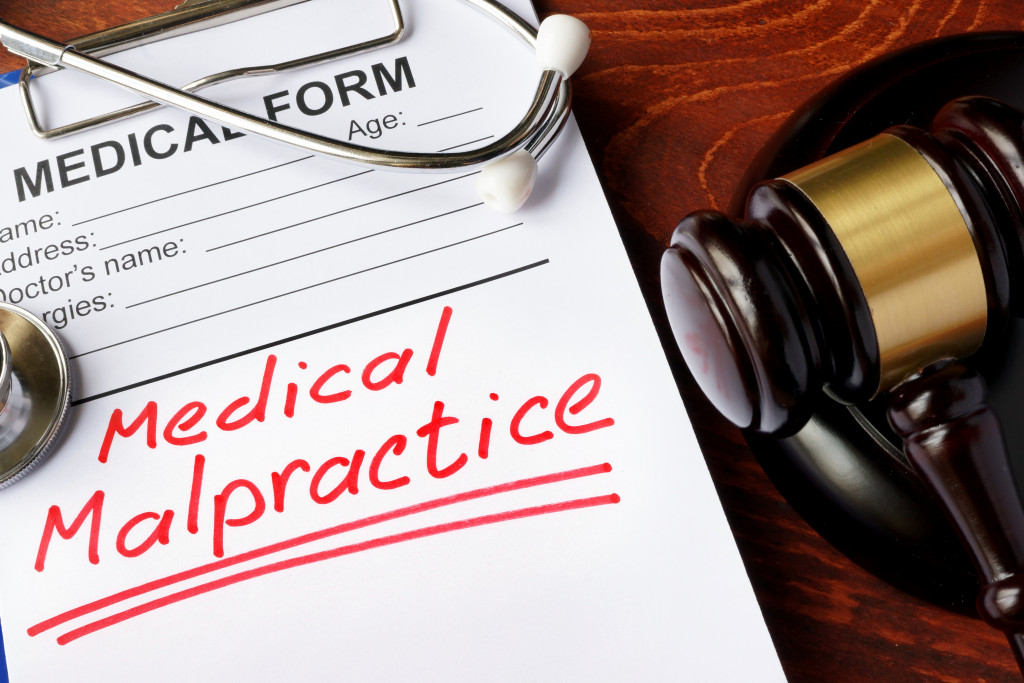People can turn to different types of attorneys for legal assistance at varying points in their lives. For domestic matters, there are family lawyers who try to settle disputes amicably. In the business setting, corporate lawyers handle business deals, incorporation, mergers and acquisitions, and other commercial issues.
However, one aspect of the law is becoming more prevalent; and this is medical malpractice.
Medical malpractice or negligence is a lawsuit that arises when a health care practitioner or doctor diverges from regulations in their fields, causing harm to a patient through an omission or negligent act.
Patients who believe that their doctor made an error in their diagnosis, treatment, or procedure can now sue the medical professional for malpractice. In some cases, malpractice results in disability or even death. In this case, the patient’s family reaches out to an attorney to pursue the case.
Common Causes of a Medical Malpractice Lawsuit
1. Delayed Diagnosis
Patients who go to outpatient clinics for treatment are the most likely to get misdiagnosed due to a lack of adequate care. With this, they often pursue other therapeutic alternatives that could have averted morbidity or death.
The cause of a lot of malpractice lawsuits is delayed diagnosis or misdiagnosis in outpatient clinics. The reason for this incurred injury addresses the patient’s failure to pursue therapeutic alternatives that might have avoided morbidity and death, as well as any treatment with potential side effects due to an incorrect diagnosis.
2. Childbirth Injuries
There are many risks associated with pregnancy and delivery. This includes the potential for injury to both mother and baby, including injuries like paralysis or problems in motor function that may result from a medical professional’s negligence during any of these events. Some examples include failure to conduct required tests during pregnancy, failure to treat fetal distress when present — even if it is just by recognizing it as such- causing harm through prenatal drug administration errors, or an emergency cesarean section not being performed at all where necessary (i.e., due solely from carelessness).
3. Anesthesia
Anesthesia errors are more common than surgical errors but can be much worse. A small mistake in anesthesia might lead to lifelong harm or death. Examples of typical anesthetic claims include:
- Failure to get a thorough patient history is suggestive of potential problems;
- Failure to inform the patient about essential preoperative procedures may also result in harmful outcomes if not addressed immediately by medical professionals;
- Ignoring crucial signs caused several patients’ deaths and paralysis because they were left untreated for too long, which resulted in permanent damage.
This could have been avoided with better care from doctors who should always remain alert when administering any medication while under supervision.
4. Informed Consent

Informed consent is the process of providing patients with all relevant information that will help them make an informed choice about their healthcare.
Medical negligence may damage a patient’s reputation, mental anguish, pain and suffering, physical disability or impairment, and even death. When this happens, it tends to result from misdiagnosis or poor care (i.e., not providing adequate post-surgery follow-up).
These incidents could result in a malpractice suit if the doctor were negligent during treatment. If not addressed quickly by medical professionals and handled appropriately each time they occur through negligence, these claims can quickly turn into multi-million dollar lawsuits.
5. Failure to Treat
A prominent example of failure to treat relates to not performing surgery or other required treatment. Failure to treat is considered a form of negligence when the following components exist:
- An accepted standard of care exists.
- The physician deviates from this standard.
- The deviation results in harm or injury to the patient.
Medical malpractice could occur if someone fails to address, recognize, or diagnose a medical emergency in time for proper treatment and prevention.
6. Medication Errors
The blame for many medication errors is usually on the prescribing physician or pharmacist. However, other individuals involved in the administration of medications also carry some degree of responsibility. Examples include:
- Pharmacists who fill prescriptions incorrectly.
- Nursing staff who administers incorrect doses.
- Technicians who inject drugs into the wrong intravenous line.
Taking the wrong medication or dose has severe repercussions for a patient’s health and well-being and severe medical complications. If such a mistake occurs with the wrong person or under the wrong conditions — it could even be fatal.
7. Surgical Errors
Surgeons are always one bad move away from a surgical error. One mistake can lead to any of the following: leaving instruments or sponges in your body; operating on someone else, with potential damage as far-reaching as losing an eye and having nerve damage that may not heal correctly; performing unnecessary procedures like amputations without knowing it’s a benign tumor they’re removing.
The best way for patients to avoid these sorts of errors is by asking questions before handing over their life into their hands (or worse yet- scalpel). They should ask about expected outcomes. If there will be pain after surgery, what needs only happen during recovery time at home? If you want more information because none of these sound reasonable, then say so.
Takeaway
If you think your doctor made a mistake during your medical care, or if you suspect that anything is wrong with the result of surgery or therapy, then consult an experienced and qualified medical malpractice lawyer who can advise and help you on this matter.

